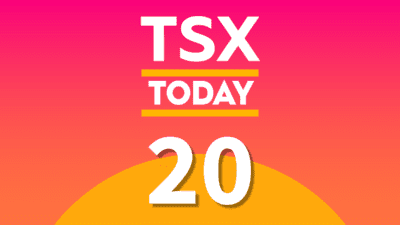Canadian savers get an extra $6,000 in TFSA limit room in 2021.
TFSA investing
The Canadian government launched the TFSA in 2009 with initial contribution space of $5,000. Since then, the TFSA limit has increased each year. Starting in 2021, the cumulative TFSA contribution space will hit $75,500. That’s significant room for Canadian investors at all stages of their careers to take advantage of the TFSA’s tax-free rules.
Retirees like to use the TFSA to create reliable income streams from dividend stocks. The payouts are not taxed, and the CRA does not use the earnings when it calculates net world income. This is important for seniors who collect Old Age Security (OAS). The OAS rules have a provision where the CRA implements a pension recovery tax, otherwise known as the OAS clawback, as soon as net world income tops a minimum threshold. The number to watch is $79,054 for the 2020 income year. Every dollar above that amount is subject to a 15% recovery tax that comes off the following year’s OAS payments.
Mid-career investors normally start boosting retirement savings, as income levels rise and they become empty-nesters. RRSP contributions tend to be the main focus to take advantage of the reduction in taxable income, but many people have cash left over to put towards retirement savings. This money traditionally went into taxable investment accounts where interest, dividends, and capital gains trigger an extra tax hit. Inside the TFSA, all these earnings remain beyond the reach of the CRA.
Younger investors with a long-term investing outlook use the TFSA to begin saving for retirement or for a home purchase. The TFSA provides decent investment room each year, so you can set up regular automatic contributions to go into the account. Investing smaller amounts is a lot cheaper these days due to the emergence of no-fee or low-fee self-directed online platforms.
Best TFSA investments
Advisors recommend balanced portfolios. One strategy involves buying top dividend stocks. Retirees use the distributions for steady income. Younger TFSA investors often reinvest the dividends in new shares to harness the power of compounding. This can turn small initial investments into vast sums over the course of 20 or 30 years, especially when combined with rising stock prices.
The best stocks to buy have long track records of dividend growth supported by rising revenue and profits. In the current environment, it makes sense to seek out stocks that provide essential services and keep raising their dividends during difficult times.
Telus (TSX:T)(NYSE:TU) and Fortis (TSX:FTS)(NYSE:FTS) are good examples.
Telus is a leading player in the Canadian communications industry. The company provides mobile, internet, and TV services across its national wireless and wireline networks. Telus also has a growing health division that provides digital health solutions to doctors, hospitals, and insurance providers.
Telus recently raised the dividend and currently offers a 4.9% yield.
Fortis is a utility company with assets that include power generation, electricity transmission, and natural gas distribution. The company’s existing $19.6 billion capital program will boost the rate base significantly in the coming years. Fortis says this will increase cash flow to support average annual dividend hikes of 6% through 2025. That’s great guidance for TFSA investors.
Fortis raised the dividend in each of the past 47 years. A $6,000 investment in Fortis 25 years ago would be worth $123,000 today with the dividends reinvested.
The bottom line
The TFSA is a great tool for investors of all ages to grow savings in a tax-free manner and generate income that won’t bump you into a higher tax bracket or put OAS pension payments at risk.
The TSX Index is home to many top dividend stocks that look attractive right now and deliver solid yields.







